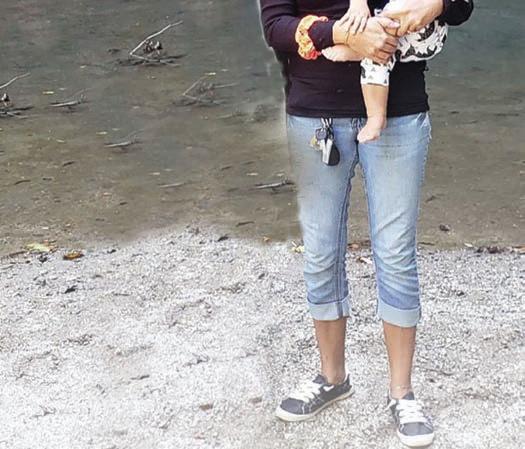
3 minute read
CARE REDIRECTED PARENTS COMPLAIN THAT PEDIATRICIANS
CARE REDIRECTED PARENTS COMPLAIN THAT PEDIATRICIANS, WARY OF COVID, SHIFT SICK KIDS TO URGENT CARE
By Kristy P. Kennedy Kaiser Health News
Advertisement
A mom of eight boys, Kim Gudgeon was at her wits’ end when she called her family doctor in suburban Chicago to schedule a sick visit for increasingly fussy, 1-year-old Bryce.
He had been up at night and was disrupting his brothers’ e-learning during the day. “He was just miserable,” Gudgeon said. “And the older kids were like, ‘Mom, I can’t hear my teacher.’ There’s only so much room in the house when you have a crying baby.”
She hoped the doctor might just phone in a prescription since Bryce had been seen a few days earlier for a well visit. The doctor had noted redness in one ear but opted to hold off on treatment.
To Gudgeon’s surprise, that’s not what happened. Instead, when she called, her son was referred to urgent care, a practice that has become common for the Edward Medical Group, which included her family doctor and more than 100 other doctors affiliated with local urgent care and hospital facilities. Because of concerns about the transmission of the coronavirus, the group is now generally relying on virtual visits for the sick, but often refers infants and young children to urgent care to be seen in person.
“We have to take into consideration the risk of exposing chronically ill and well patients, staff and visitors in offices, waiting areas or public spaces,” said Adam Schriedel, chief medical officer and a practicing internist with the group.
Gudgeon’s experience is not unusual. As doctors and medical practices nationwide navigate a new normal with COVID-19 again surging, some are relying on urgent care sites and emergency departments to care for sick patients, even those with minor ailments.
That policy is troubling to Dr. Arthur “Tim” Garson Jr., a clinical professor in the College of Medicine at the University of Houston who studies community health and medical management issues. “It’s a practice’s responsibility to take care of patients,” Garson said. He worries about patients who can’t do video visits if they don’t have a smartphone or access to the internet or simply aren’t comfortable using that technology.
Garson supports protocols to protect staff and patients, including in some instances referrals to urgent care. In those cases, practices should be making sure their patients are referred to good providers, he said. For instance, children should be seen by urgent care facilities with pediatric specialists.
REFERRAL GUIDELINES
Referrals for children have become so prevalent that the American Academy of Pediatrics came out with interim guidance on how practices can safely see patients, in an effort to promote patient-centered care and to ease the strain on other medical facilities as the peak of flu season approaches. The academy recommended that pediatricians strive “to provide care for the same variety of visits that they provided prior to the public health emergency.”
The academy raises concerns about unintended consequences of referrals, such as the fragmentation of care and increased exposure to other illnesses, both caused by patients seeing multiple providers; higher out-of-pocket costs for families; and an unfair burden shifting to the urgent care system as illnesses surge.
2021 Medical Directory • 10
“I think this is all being driven by fear, not really knowing how to do this safely, and not really thinking about all of the sorts of consequences that are going to come as flu and other respiratory illnesses surge this fall and winter,” said Dr. Susan Kressly, who recently retired from her practice in Warrington, Pennsylvania, and authored the AAP guidance.
Fear is not unfounded. More than 900 health care workers, 20 of them pediatricians and pediatric nurses, have died of COVID-19, according to a KHNGuardian database of front-line health care workers lost to the coronavirus.
For the Edward Medical Group, referrals are a safe way to treat patients by using all the resources of its medical system, Schriedel said.
“We can assure patients, regardless of COVID-19, we have multiple options to provide the care and services they need,” he said.
Besides urgent care referrals and virtual visits, doctors have been given guidelines on how to safely see sick patients. That might mean requesting a negative COVID test before a doctor visit or having staff escort a sick patient from the car directly to an exam room. Also, a pilot program is underway with designated offices taking patients with a respiratory illness that could be flu or COVID-19.












